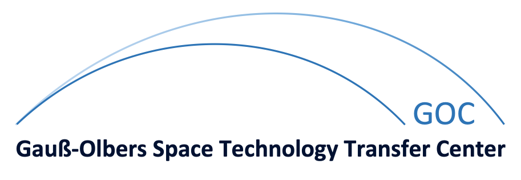Physical Layer Cooperation in Distributed Relaying Systems
Objectives:
- Scalable adaptive communication within groups of relay nodes
- Reconcile simplicity of SISO systems and performance power of MIMO systems
- Consideration of total energy (transmit and chip energy)
Work Tasks (currently):
- Design and optimization of inter-relay cooperation (IRC)
- Performance evaluation of distributed STBC with link adaptation
- Energy model construction for the proposed IRC schemes
The application of cooperative strategies in wireless networks offers several advantages like improved performance, increased system throughput, and coverage extension. To this end, the source destination link is expanded by additional transceivers in the link, e.g., mobile terminals, relays, or sensor nodes. By clustering several nodes virtual antenna arrays are constructed and coding and signal processing approaches known from multiple antenna systems can be applied in principle to these distributed systems. Depending on the allowed amount of cooperation between the nodes within a cluster different reception and transmission approaches can be implemented. In this project, we aim at the investigation of relay networks with single and multiple antenna relays, adapted distributed signal processing approaches, and different levels of cooperation within the clusters and between the clusters. The focus lies on implementation aspects in the physical layer and corresponding energy consumption considerations. The latter aspect is especially important for wireless sensor networks due to the battery power restrictions per node.
This project is funded within the DFG-Schwerpunktprogramm 1397 COIN (Communication in Interference Limited Networks).
Details
| Duration: | 10/2009 - 01/2012 |
| Funding: | German Research Foundation |
| Partners: | Institut für Theoretische Elektrotechnik und Mikroelektronik (ITEM), University of Bremen |
| Subsequent: | Physical Layer Network Coding in Two-Way Relaying |
Publications
-
Physical Layer Cooperation in One-Way Relaying Systems
BibTEX
M. Wu, F. Ludwig, D. Wübben, A. Dekorsy, K.-D. Kammeyer, S. Paul
Chapter in Communications in Interference-Limited Networks, Springer, Germany, February 2016 -
An Improved Inter-Relay Cooperation Scheme for Distributed Relaying Networks
BibTEX

M. Wu, W. Xue, D. Wübben, A. Dekorsy, S. Paul
International ITG Workshop on Smart Antennas (WSA 2012), Dresden, Germany, 7. - 8. March 2012 -
Energy-aware Design of Inter-Relay Cooperation for Distributed Relaying Networks
BibTEX

M. Wu, W. Xue, D. Wübben, A. Dekorsy, S. Paul
8th International Symposium on Wireless Communication Systems (ISWCS 2011), Aachen, Germany, 6. - 9. November 2011, DOI -
BER-based Power Allocation for Decode-and-Forward Relaying with M-QAM Constellations
BibTEX

M. Wu, D. Wübben, A. Dekorsy
7th International Wireless Communications and Mobile Computing Conference (IWCMC 2011), Istanbul, Turkey, 4. - 8. July 2011, DOI -
Decode-Quantize-Forward for OFDM-based Relaying Systems
BibTEX

D. Wübben, M. Wu
2011 IEEE 73rd Vehicular Technology Conference (VTC2011-Spring), Budapest, Hungary, 15. - 18. May 2011, DOI -
BER-based Power Allocation for Amplify-and-Forward and Decode-and-Forward Relaying Systems
BibTEX

M. Wu, D. Wübben, A. Dekorsy
International ITG Workshop on Smart Antennas (WSA 2011), Aachen, Germany, 24. - 25. February 2011 -
Generalized Sum-Product Algorithm for Joint Channel Decoding and Physical-Layer Network Coding in Two-Way Relay Systems
BibTEX

D. Wübben, Y. Lang
IEEE 2010 Global Telecommunications Conference (Globecom 2010), Miami, FL, USA, 6. - 10. December 2010, DOI -
Joint Channel Decoding and Physical-Layer Network Coding in Two-Way QPSK Relay Systems by a Generalized Sum-Product Algorithm
BibTEX

D. Wübben
7th International Symposium on Wireless Communication Systems (ISWCS 10), pp. 576-580, York, Great Britain, 19. - 22. September 2010, DOI -
Comparison of Distributed LDPC Coding Schemes for Decode-and-Forward Relay Channels
BibTEX

M. Wu, P. Weitkemper, D. Wübben, K.-D. Kammeyer
International ITG Workshop on Smart Antennas (WSA 2010), Bremen, Germany, 23. - 24. February 2010







